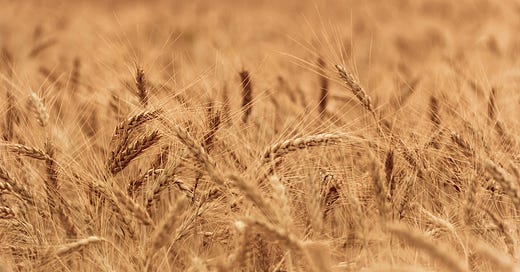Some early notes about South Africa’s upcoming 2025-26 winter crop season
Yes, yes, I know it's too early to know more...
The past few weeks were demanding, and I could not comment regularly on most agricultural matters. I am taking advantage of this quiet Sunday to share a few notes guiding my early thoughts about the 2025-26 winter crop season.
We must start thinking about the winter crop season as we are now at the tail end of the critical summer crop season in South Africa. The 2024-25 summer crop season looks promising. The Crop Estimates Committee forecasts the 2024-25 summer grain and oilseeds production at 18,0 million tonnes, up 16% from the previous season. This comprises maize, sunflower seed, soybeans, groundnuts, sorghum and dry beans.
With these summer crops now mostly at maturing stages of development, we will increasingly focus on the new season, the 2025-26 production for winter crops, which starts in May in some regions of the country.
At the end of April, the Crop Estimates Committee will release the farmers’ intentions to plant winter crops for the 2025-26 season. The significant determinants of the farmers’ views about the season will include (1) the weather outlook, (2) input costs, and (3) commodity prices, amongst other factors.
It is too early to know how the season will turn out weather-wise. Still, the South African Weather Service's latest comments in its Seasonal Climate Watch report on March 31 are somewhat concerning.
The Weather Service stated:
“Due to the change of seasons into late autumn (Apr-May-Jun) and early- to mid-winter (May-Jun-Jul and Jun-Jul-Aug), the focus shifts to the south-western parts of the country and the southern and eastern coastal areas. The south-western parts of the country are expected to receive below-normal rainfall during the forecasted seasons, and the southern and eastern coastal areas are expected to receive mostly above-normal rainfall.”
The best guide will be the April report, which is published before the soil preparation period starts in the various regions of the Western Cape.
The Western Cape is the major producer of South Africa’s winter crops, followed by the Northern Cape, Free State, and Limpopo, which are primarily under irrigation.
This past 2024-25 season, South African farmers planted 818,750 hectares of winter crops, including wheat, barley, canola, oats, and sweet lupines. This area was slightly down from the 820,250 hectares planted in the 2023-24 season.
Regarding input costs, farmers will start the winter crop season with most inputs down roughly 10% from a year ago. Indeed, prices aren’t back to pre-COVID-19 levels. Still, these are better levels than a few months ago.
In the case of commodity prices, large global wheat supplies could keep prices broadly under pressure. Still, with the necessary protection in South Africa, such as a wheat import tariff, South African farmers should be somewhat shielded from any notable decline in global wheat prices. This, of course, assumes that the changes in wheat tariffs will be more effective and executed on time going forward.
Overall, the environment is broadly balanced regarding input costs and commodity prices. The one factor we will have to monitor constantly is weather conditions.





